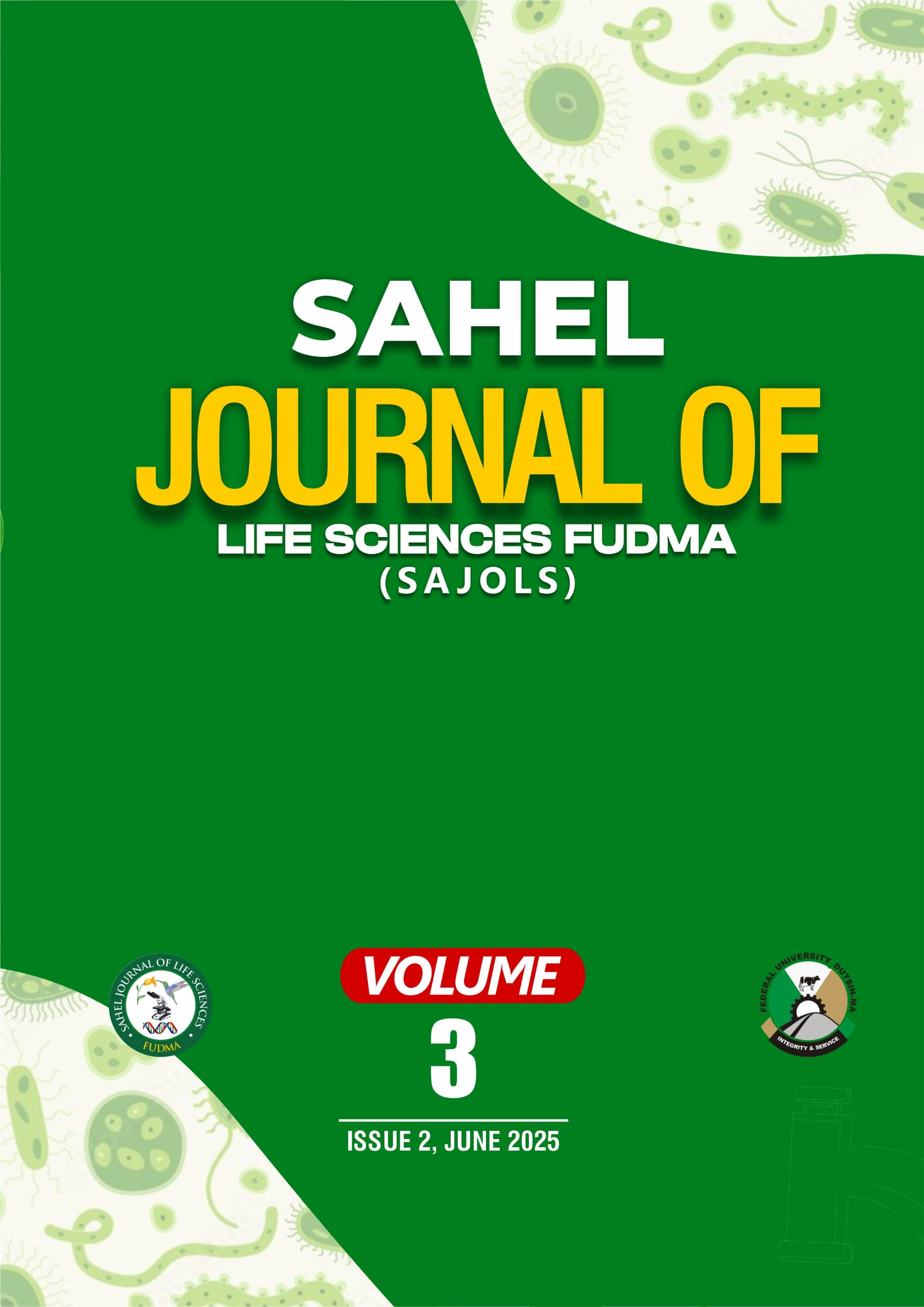Studies on Malaria Vectors and Climatic Factors: The Cause of Malaria Transmission in Selected Communities of Benue State, North Central Nigeria
DOI:
https://doi.org/10.33003/sajols-2025-0302-45Abstract
Mosquitoes are nuisance pests and vectors of disease-causing pathogens. This study investigated the species distribution and abundance of Anopheles mosquitoes in relation to temperature and relative humidity in three LGAs of Benue State, Nigeria: Agatu, Makurdi, and Otukpo. Sampling was conducted using Pyrethroid Spray Catch (PSC) and CDC light traps, with morphological identification using standard keys. Six species were identified: Anopheles gambiae s.l, An. funestus, An. nili, An. coustani, An. rufipes, and An. pharoensis. An. gambiae s.l and An. coustani were most dominant. Overall abundance was higher in the rainy season (61.17%) than in the dry season (38.81%), attributed to increased breeding sites from rainfall. Agatu’s swampy grassland supported the highest vector density compared to Makurdi and Otukpo. Monthly variation showed peaks in May (12.88%) and June (12.37%), with the lowest in February (5.40%). In Agatu, An. gambiae s.l accounted for 46.95% of collections, while An. coustani was least abundant (0.60%). In Makurdi, An. gambiae s.l was highest (65.76%) and An. pharoensis lowest (5.98%), with no An. coustani recorded. In Otukpo, An. gambiae s.l was also highest (75.76%) and An. coustani lowest (3.09%). The predominance of An. gambiae s.l reflects its adaptability to varying environments. Statistical analysis revealed significant differences (p<0.05) in species composition across the LGAs. These findings highlight seasonal and ecological influences on vector distribution, with implications for targeted mosquito control strategies in Benue State.


